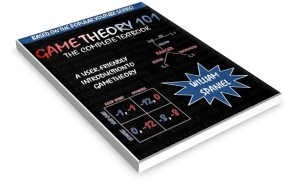This lecture begins integrating information and updated beliefs into a single model. It also teaches an interesting lesson on auction theory: be careful how you bid, as what you win might not be what you thought it was.
Takeaway Points
- Review: In a second price auction featuring a good whose value to an actor is independent of others’ values, it is an equilibrium to submit one’s true valuation.
- Many goods have common values. For example, if someone knows that an oil deposit has enormous reserves, then that should make my valuation of the deposit higher than with only the information I have.
- In such a second price auction with these common values, submitting one’s own expectation about the value of the good is not an equilibrium.
- To see why, suppose that you win the auction. By virtue of being the winner, you know that the other side had a lower expected value of the prize. Internalizing that information, your posterior belief about prize’s value is now less than what you thought it was when you made the initial bid. This effect is called the winner’s curse.
- The solution to the problem is to bid based on your value conditional on you winning the auction. This means submitting a bid lower than one’s own information would suggest.
- Moreover, as the number of bidders goes up, you should further shade down your bid. To understand why, suppose there were 1000 bidders. If everyone submitted their true value, whoever wins must be very far away from the actual value of the prize. A larger shading combats that problem.

